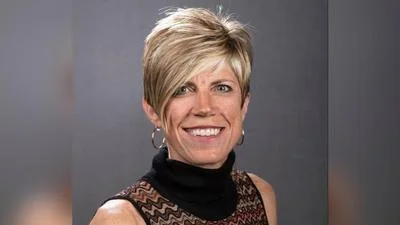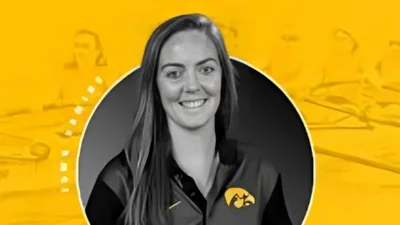When is left really left? Or right really right? The answer? It depends on perspective. And in a surgical environment, sharing that perspective is crucial to a safe and successful procedure.
“If you are performing surgery on a patient’s left ankle, it matters whether the patient is lying face up or face down, that’s why it’s critical to mark a surgery site and double-check it before the procedure begins,” says Abby Holtkamp, BSN, RN, perioperative nurse.
“As I was watching them prep and clip the patient’s head before the procedure, I thought something was wrong,” says Abby Holtkamp, BSN, RN, perioperative nurse. “I immediately said, ‘Wait, we need to stop. We’re consented for the left side of the head, and I think you’re shaving the right side.’”
That double-check is part of a series of safety protocols in place to protect the patient and help the care team provide the highest quality of care possible.
Speaking up
Recently, a patient was being prepped for a burr hole procedure—where small holes are drilled into the skull to relieve pressure from fluid buildup in the brain.
Before final preparations were made, the patient’s bed was turned 90-degrees in the operating room (OR).
“As I was watching them prep and clip the patient’s head before the procedure, I thought something was wrong,” says Holtkamp. “I immediately said, ‘Wait, we need to stop. We’re consented for the left side of the head, and I think you’re shaving the right side.’”
Abby Holtkamp, BSN, RN, emphasizes the role teamwork plays in performing safe and successful procedures.
It may seem odd to turn the patient’s bed, but there’s a specific reason it’s done. During intubation, the patient’s head is positioned toward the anesthesia equipment. However, the OR team cannot operate next to that anesthesia equipment. The bed is turned to give the surgery team better access to the surgical site, while still giving the anesthesia team access to the airway in case of emergencies.
Turning the bed meant that when the surgical drape was placed over the patient, the markings on the patient’s head used to identify the surgical site became hidden under the drape.
The team immediately stopped, double-checked the procedure site, and corrected the patient’s orientation to ensure the correct procedure site was available.
“It’s not hard to get turned around, which is why we have so many double-checks and why everyone in the OR is encouraged to speak up at any time,” says Holtkamp.
‘We’re all patient advocates’
While we may be hesitant to speak up, it’s our responsibility to do so, especially in the context of the OR.
“The patient is always the most important person in the room,” says Holtkamp. “I expect all of my colleagues to speak up if they see anything that concerns them, because I’m going to do the same.”
In this case, Holtkamp noticed the potential problem before the official time-out, a process when the surgical team takes time to verify the patient’s name, the type of procedure being performed, and the location of the procedure.
“We’re all human, and we can all get confused, especially when a patient is turned as you’re standing behind them,” says Holtkamp. “In the OR, we’re always told that your title and position don’t matter, you must have respect for everyone in the OR because we’re all patient advocates.”
Holtkamp emphasizes the need to speak up when you feel something’s wrong. Regardless of title or credentials, she says not to be hesitant.
“We’re all in this together,” she says. “We all have the same job, which is to make sure the patient receives the care they need.”
Original source can be found here.





 Alerts Sign-up
Alerts Sign-up